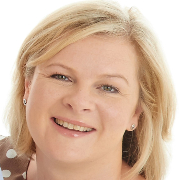We hear about COP26 and climate change being very much in the news and rightly so, it is a highly important topic. However, how many of you are aware that we have a World Antimicrobial Awareness Week (WAAW)?
AMR evaluation
I am an evaluation specialist and I joined BBSRC’s evaluation team in January 2021.
My first evaluation for the organisation is on AMR, where I am working with colleagues in BBSRC’s research strategy and programmes domain to deliver a major review into AMR. As a result, I am discovering some fascinating research.
I really like this aspect of my role that seeks to understand how an intervention was implemented, what effects it had, for whom, how and why.
On 26 November, the review panel for our AMR evaluation will be meeting to discuss the evaluation report. As an independent panel of experts, they will:
- assess research quality
- assess economic and societal impact
- consider how BBSRC can improve its future AMR research strategy.
Spread awareness, stop resistance
Celebrated annually, the theme of WAAW 2021 will be ‘spread awareness, stop resistance’. The theme was announced by the AMR Tripartite organisations:
- Food and Agriculture Organization of the United Nations
- World Organisation for Animal Health
- World Health Organization (WHO).
WAAW takes place from 18 to 24 November. It aims to increase awareness of global AMR.
This year people are being asked to ‘go blue’ in support of WAAW. There is a wealth of information on the WHO website but these are some of the key facts that we wanted to highlight from this useful resource:
- WHO has declared that AMR is one of the top 10 global public health threats facing humanity
- misuse and overuse of antimicrobials are the main drivers in the development of drug-resistant pathogens
- without effective antimicrobials, the success of modern medicine in treating infections, including during major surgery and cancer chemotherapy, would be at increased risk
- antibiotic resistance occurs naturally, but misuse of antibiotics in humans and animals is accelerating the process.
New generation of ‘superbugs’
The rise and spread of AMR is creating a new generation of ‘superbugs’ that cannot be treated with existing medicines. The impacts of AMR are extensive and costly, not just financially, but in relation to global health, environmental wellbeing, socio-economic development and much more.
AMR infections are estimated to cause 700,000 deaths each year globally and that figure is predicted to rise to 10 million by 2050 if no action is taken.
As outlined in the national 5-year AMR action plan, rising AMR will cause people to suffer longer infectious illnesses as they become increasingly difficult to treat. The number of human deaths and suffering attributable to infectious disease will rise along with the socio-economic costs.
These are staggering statistics.
 Over £30 million in AMR funding
Over £30 million in AMR funding
BBSRC have been investing increasing amounts of funding in research relating to AMR. Over the past three years, BBSRC expenditure on research relating to AMR has averaged over £30 million per year.
Funding covers:
- the discovery of novel antimicrobial compounds
- understanding the fundamental microbiology of organisms
- understanding how resistance develops or is maintained, and so on.
Below are just a handful of examples of the impacts arising from past BBSRC AMR investments that are included in my evaluation report.
Combatting infections
Launched in 2018, Amprologix plans to develop and commercialise work from a pioneering drug discovery programme at University of Plymouth focused on identifying the next generation of antibiotics.
Their patented cream contains epidermicin and can be used to combat infections against antibiotic-resistant bacteria such as MRSA (methicillin-resistant Staphylococcus aureus).
It was great to hear that they have since received more funding from Innovate UK and secured £10 million investment for human clinical trials.
Durham University in partnership with Procter and Gamble
I quickly discovered that AMR extends beyond human and animal healthcare settings and into the personal care market.
Durham University bioscientists and chemists collaborated with Procter and Gamble to improve the formulation of their products for better antibacterial action. By modifying the combinations of ingredients that have antimicrobial properties (chelants), the research team aim to reduce the quantities of preservatives and other additives.
Their work has also informed projects on antibacterial surfaces and devices (SmartBiofilm) with the potential to treat wound infections.
FARMS-SAFE
Argentina was the first country in Latin America to develop a national strategy for the control of antibacterial resistance. I was interested to learn that this strategy starts with the assumption that the use of antibacterial drugs in livestock agriculture is in part responsible for the threat of antibacterial resistance in humans.
The Future-proofing Antibacterial resistance Risk Management Surveillance and Stewardship in the Argentinian Farming Environment (FARMS-SAFE) project provides information to better characterise antibacterial resistance and antibacterial drug usage on livestock farms.
Although still in the midst of data collection, this project is producing a vade mecum (handbook of medicines) detailing antibiotics used in cattle and pigs in Argentina. It’s anticipated that the use of these important medicines will be improved throughout the country. Researchers hope the outcomes of this important work will be taken forward by policy makers, the veterinary profession and livestock farmers worldwide.
BBSRC contributed to the national 5-year AMR action plan and now this evaluation will help inform future strategy for BBSRC’s investments in AMR. I look forward to publishing the final report for you all to read.
Further reading
Find out more about how UKRI-funded research is helping to combat the spread of antibiotic resistance.
I hope today, by reading about AMR and learning a bit more, you will join me in ‘going blue’ from 18 to 24 November to shed a little light on this important subject.
Top image: Credit: ClaudioVentrella, Getty Images




